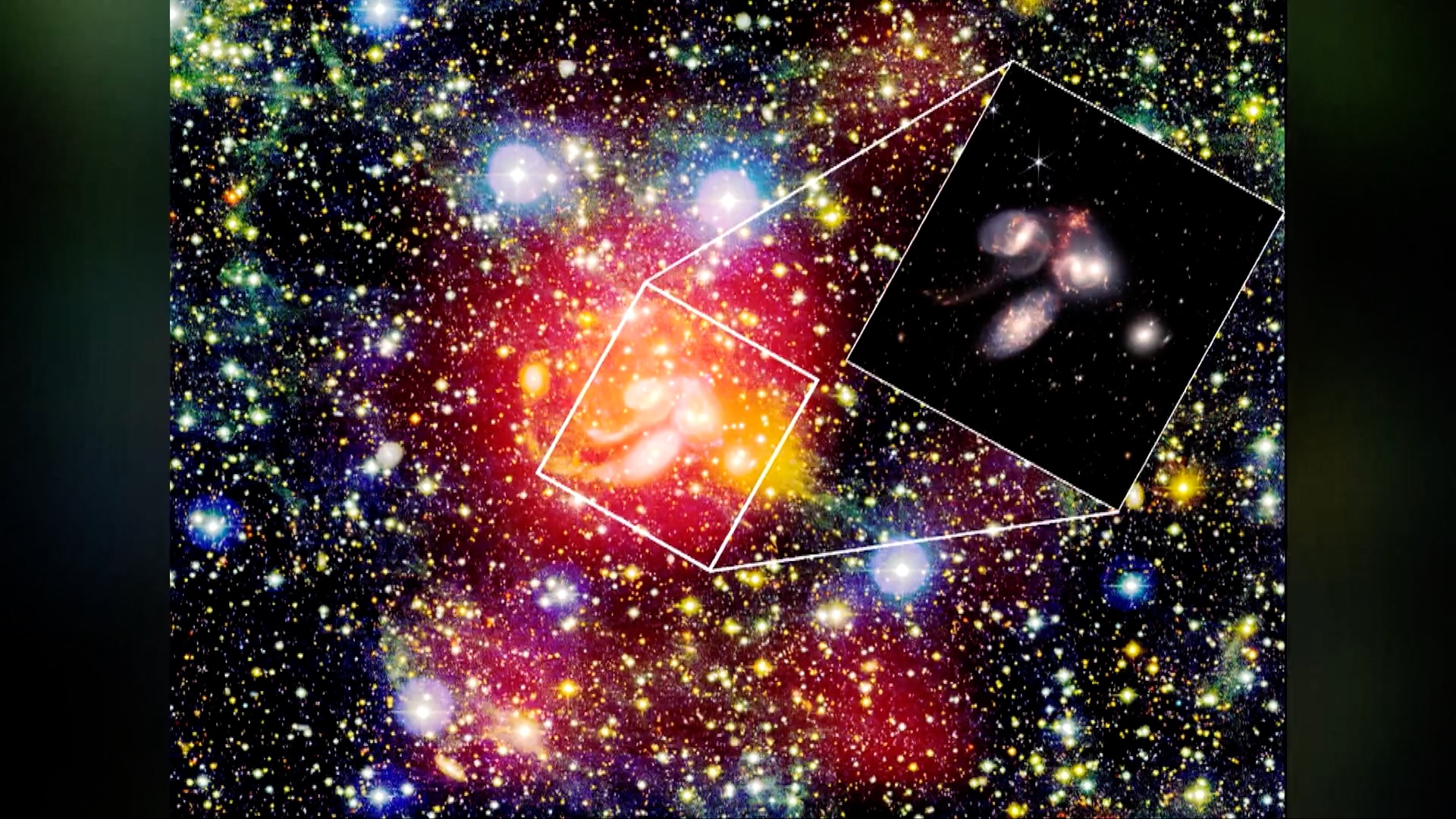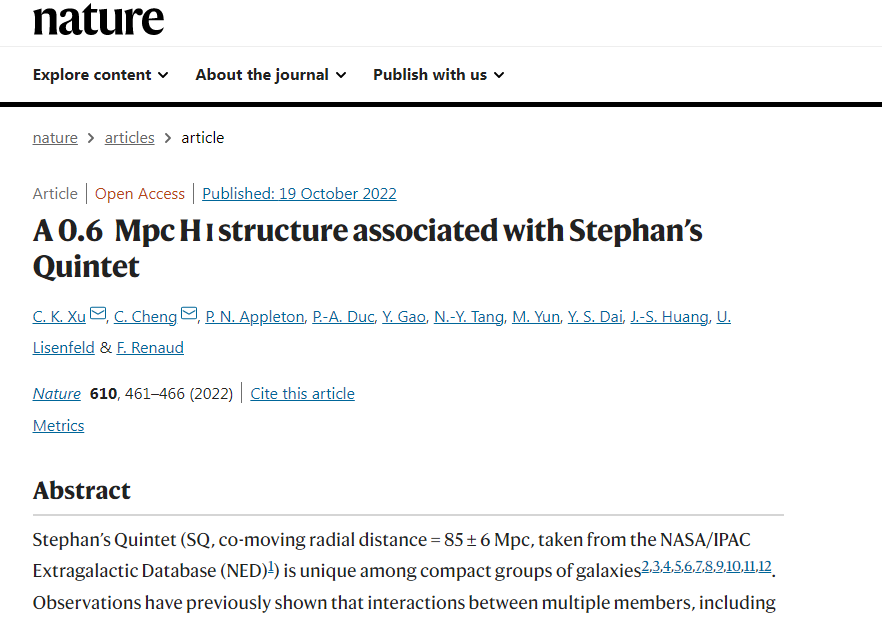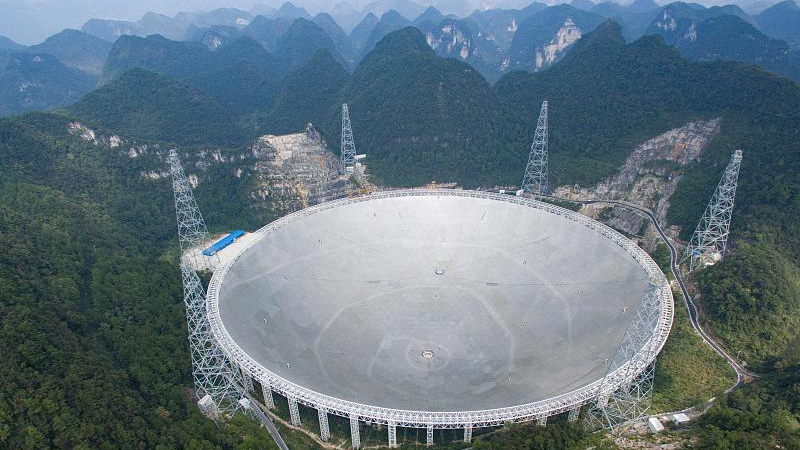00:47

China's Five-hundred-meter Aperture Spherical Radio Telescope (FAST) discovered the biggest atomic cloud in the universe by far, which is 20 times larger than our Milky Way galaxy.
The finding was published by an international team led by Chinese scientists in international journal Nature on Wednesday.

A screenshot of the published paper about the newly discovered atomic cloud in the journal Nature, October 19, 2022. /CGTN
A screenshot of the published paper about the newly discovered atomic cloud in the journal Nature, October 19, 2022. /CGTN
Using the world's largest single-dish telescope, the scientists observed a group of galaxies known as Stephan's Quintet. The result shows a mammoth low-density gaseous structure existed in a relatively far location from the center of Stephan's Quintet.
The atomic cloud is roughly 2 million light years wide and made up of hydrogen atoms. One light year is equivalent to about 9.46 trillion kilometers.

The 500-meter Aperture Spherical Radio Telescope in Pingtang County, Guizhou Province, China. /CFP
The 500-meter Aperture Spherical Radio Telescope in Pingtang County, Guizhou Province, China. /CFP
The latest finding suggests that the gaseous structure may be formed under the influence of interactions between galaxies. It has already existed for 1 billion years.
The study also suggested there might be more large-scale, low-density atomic gas structures out in space.
The discovery challenges the current understanding of how the galaxies and the gaseous structure evolved in the universe as "the atomic gas with low density should have been destroyed by the ultraviolet radiation in the cosmic background based on current theories," according to the lead author Xu Cong from the National Astronomical Observatories under the Chinese Academy of Sciences.